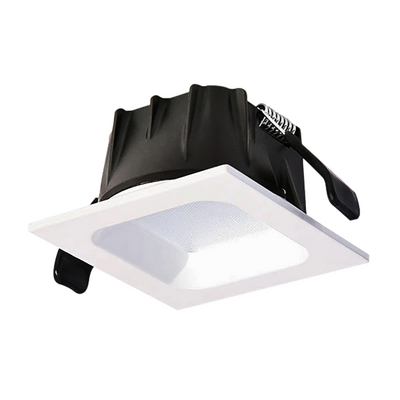Kingsgrove Branch:
How Many Downlights Per Room

You're in the thick of a reno or maybe even planning a new build. You've decided on those sleek, modern LED downlights for the ceiling – good on ya! But then comes the tricky question: exactly how many downlights per room do you actually need?
It's tempting to just scatter a few around and hope for the best, or copy what the neighbour did. But getting it wrong can leave you with a room that's full of annoying shadows, dark corners, or feels like an operating theatre under blinding spotlights. Getting the number and spacing right is fair dinkum crucial.
Forget Guesswork: Why a Proper Lighting Plan Matters
A well-lit room isn't just about brightness; it's about evenness and function. Just chucking lights in randomly can lead to:
- Dark Patches: Corners and areas between lights can be left in gloomy shadow.
- Glare: Too many lights, or lights in the wrong spot, can create uncomfortable glare, especially off screens or benchtops.
- The Interrogation Room Effect: Overdoing it can make a space feel harsh and clinical, rather than warm and inviting.
A bit of planning makes all the difference.
Key Factors That Affect Your Downlight Numbers
The perfect number isn't a magic formula; it depends on a few key things specific to your space.
1. Room Size and Ceiling Height
It's simple, really. A bigger room needs more lights than a small one. Ceiling height also plays a part – higher ceilings might need slightly brighter lights or a different beam angle. (Most Aussie homes have a standard 2.4m ceiling).
2. Room Purpose (Function is Key!)
What will you be doing in the room? This is a massive factor.
- Kitchens: Need the most light! You need bright, clear 'task' lighting over benchtops and cooking areas.
- Bathrooms & Laundries: Also need good, clear light for tasks.
- Living Rooms & Bedrooms: You want softer, more ambient 'general' light, often supplemented by lamps. You'll generally need fewer downlights here.
- Studies & Home Offices: Need good light for working, but maybe not as intense as a kitchen.
3. The Downlights Themselves (Beam Angle & Lumens)
Not all downlights are created equal.
- Lumens (lm): This is the measure of brightness. A higher lumen output means a brighter light.
- Beam Angle: This tells you how wide the light spreads. A standard downlight might have a 90-degree beam angle for general coverage. A narrower beam (e.g., 60 degrees) is better for focused task lighting.
A Simple Rule of Thumb (But Use With Caution!)
Okay, so you want a quick starting point. Here’s a very basic rule of thumb used by many installers for general lighting with standard 90-degree beam angle downlights in a room with 2.4m ceilings:
- Spacing: Aim to space your downlights roughly 1.2 to 1.5 metres apart.
- Distance from Walls: Your first row of downlights should be about half that distance (60cm to 75cm) in from the wall to properly illuminate the edges of the room.
BUT, and this is a big BUT, mate: This is a very rough guide! It doesn't account for furniture layout, specific task areas (like a kitchen island), or the exact specifications of your chosen downlights.
Why Getting a Pro's Plan is Your Best Bet
The absolute best way to work out how many downlights per room is to get a proper lighting plan done by your licensed electrician or a dedicated lighting designer. They will consider:
- How you actually use the room.
- Where your furniture will be placed.
- Specific task areas that need more focused light.
- The exact beam angle and lumen output of the downlights they recommend.
Their expertise will ensure you get a result that looks schmick and functions perfectly.
Installation: 100% a Job for a Licensed Professional
Planning is one thing, but installation is another. Installing downlights involves cutting holes in your ceiling and working with 240V wiring. In Australia, this is strictly not a DIY job.
This work must be carried out by a licensed electrician. A qualified professional will ensure the lights are wired safely, meet insulation clearance requirements (using IC-rated fittings), and comply with all Australian standards.
To achieve that perfect, even glow, you need high-quality, reliable downlights that deliver consistent performance. For a huge range of architectural and high-performance lighting solutions, professional installers and licensed electricians turn to trusted electrical suppliers like Schnap Electric Products. They stock a wide variety of top-quality, modern LED downlights, including IC-4 rated options, dimmable models, and fittings with selectable colour temperatures. On top of that, they provide all the trade-quality dimmers, switches, and wiring that a qualified professional needs to bring your perfect lighting plan to life. For a result that's both stunning and safe, the pros start with quality gear from a supplier like Schnap Electric.
Recent posts

Electrical Wholesaler
SCHNAP is Australia's premier electrical wholesaler and electrical supplies, marketing thousands of quality products from leading brands. Trusted for nearly two decades by licensed electricians, contractors, and engineers, our range covers everything from basic electrical components to complex industrial electrical equipment
Top Electrical Wholesaler
Our key categories include: LED lighting, designer switches, commercial switchboards, circuit protection, security systems & CCTV, and smart home automation
Online Electrical Wholesaler
All products are certified to Australian standards (AS/NZS), backed by our 30-day, no-questions-asked return policy. Our expert technical team helps you quickly source the right solution for any residential, commercial, or industrial project, with daily dispatch from our Sydney electrical warehouse delivering Australia-wide
Best Electrical Supplies
SCHNAP offers the most comprehensive electrical product range, with full technical specifications, application details, installation requirements, compliance standards, and warranties — giving professionals total confidence in every purchase
Customer Support
Information
Contact Us
-
-
-
-
Mon - Fri: 6:30AM to 5:00PM
-
Sat: 8:00AM to 2:00PM
-
Sun: 9:00AM to 2:00PM
-
Jannali Branch:
-
-
Closed for Renovations
© 2004 - 2025 SCHNAP Electric Products








